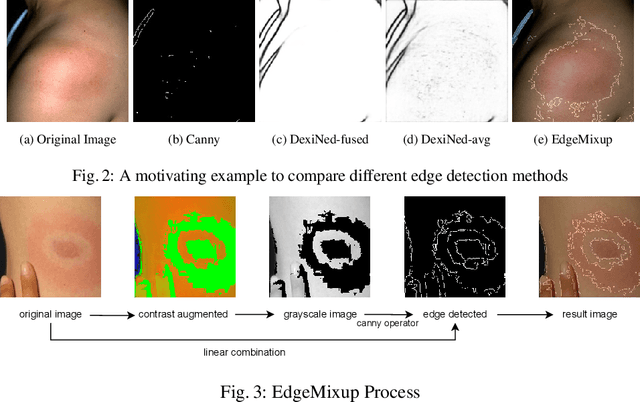EdgeMixup: Improving Fairness for Skin Disease Classification and Segmentation
Paper and Code
Feb 28, 2022



Skin lesions can be an early indicator of a wide range of infectious and other diseases. The use of deep learning (DL) models to diagnose skin lesions has great potential in assisting clinicians with prescreening patients. However, these models often learn biases inherent in training data, which can lead to a performance gap in the diagnosis of people with light and/or dark skin tones. To the best of our knowledge, limited work has been done on identifying, let alone reducing, model bias in skin disease classification and segmentation. In this paper, we examine DL fairness and demonstrate the existence of bias in classification and segmentation models for subpopulations with darker skin tones compared to individuals with lighter skin tones, for specific diseases including Lyme, Tinea Corporis and Herpes Zoster. Then, we propose a novel preprocessing, data alteration method, called EdgeMixup, to improve model fairness with a linear combination of an input skin lesion image and a corresponding a predicted edge detection mask combined with color saturation alteration. For the task of skin disease classification, EdgeMixup outperforms much more complex competing methods such as adversarial approaches, achieving a 10.99% reduction in accuracy gap between light and dark skin tone samples, and resulting in 8.4% improved performance for an underrepresented subpopulation.
 Add to Chrome
Add to Chrome Add to Firefox
Add to Firefox Add to Edge
Add to Edge